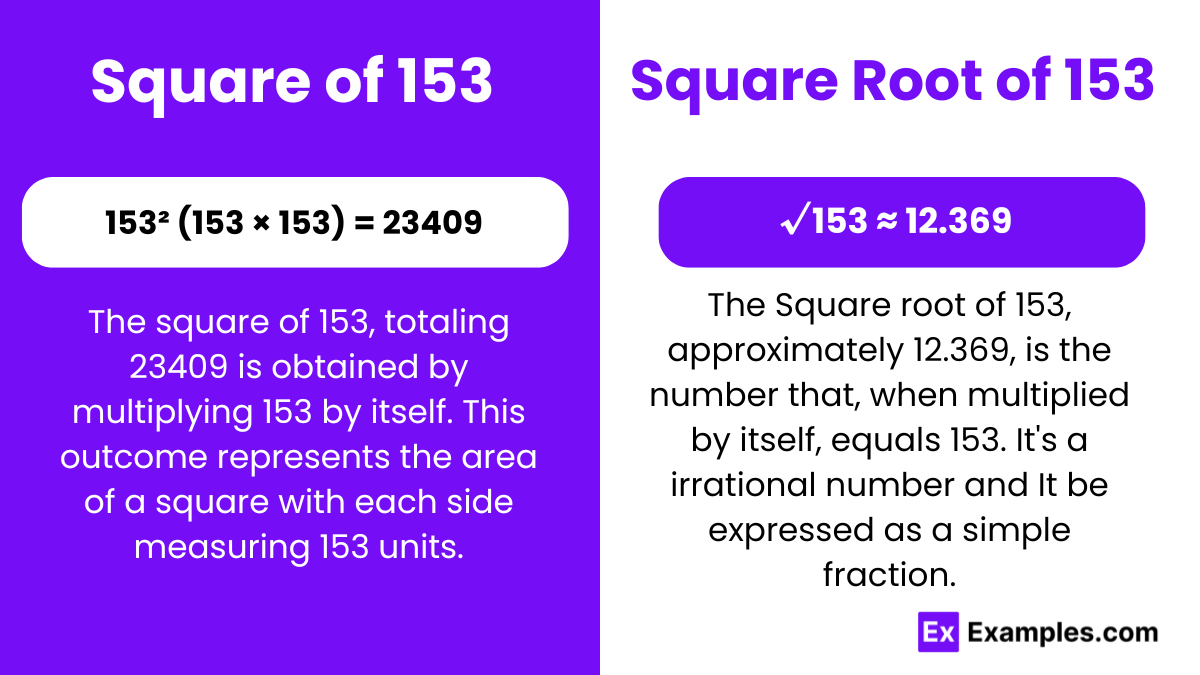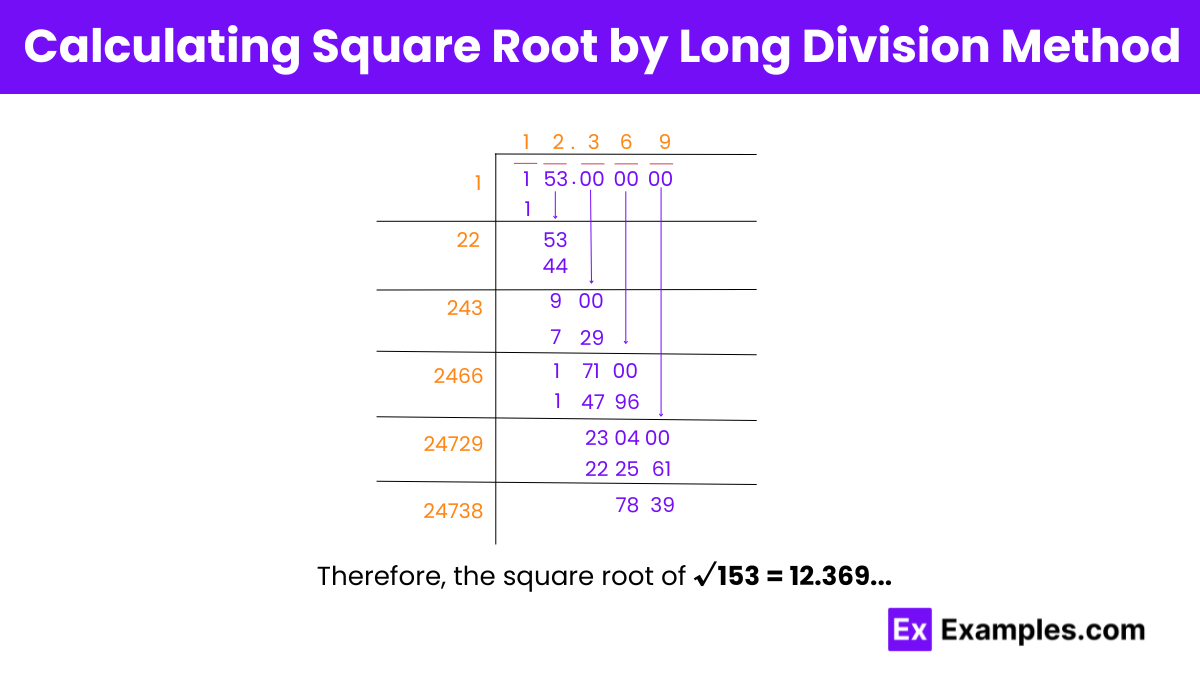What is the square of 153?
23409
14409
23400
15300


Within the domain of algebraic mathematics, squares and square roots hold significant importance. Squaring a number, such as 153, entails multiplying it by itself, yielding 23409. This foundational operation is vital for exploring rational and irrational numbers. A grasp of these fundamentals enriches understanding of mathematical relationships and patterns. Squares illuminate inherent number properties, while square roots unravel intricate numerical mysteries. These concepts serve as beacons, guiding mathematical explorations into fractional territories. Proficiency in squares and square roots equips mathematicians to navigate varied mathematical landscapes, unveiling the elegance and complexity inherent within algebraic frameworks.
The square of 153 equals 23,409, obtained by multiplying 153 by itself, a fundamental operation in algebraic mathematics, uncovering inherent number properties.
The square root of 153 is approximately 12.369. This fundamental mathematical operation reveals the value that, when multiplied by itself, equals 153.
Exponential Form: 153^½ or 153^0.5
Radical Form: √153
Rational numbers are expressible as the quotient of two integers. Irrational numbers, however, cannot be represented as fractions of integers. Examples of irrational numbers include the square roots of non-perfect squares.

Pair the digits of 153 as “1” and “53”. For precision, add decimal points and pairs of zeros, making it “153.00 00 00”.
Find the largest number whose square is ≤ 1, which is 1. Subtract 1 from 1, resulting in 0. Bring down “53”, making it 53.
Double 1 to get 2. Find a digit that, when added to 2 and multiplied by the same digit, gives ≤ 53. The digit is 2 (22 × 2 = 44). Subtract 44 from 53, resulting in 9. Bring down “00”, making it 900.
Double 12 to get 24. Find a digit that, when added to 24 and multiplied by the same digit, gives ≤ 900. The digit is 3 (243 × 3 = 729). Subtract 729 from 900, resulting in 171. Bring down “00”, making it 17100.
Double 123 to get 246. Find a digit that, when added to 246 and multiplied by the same digit, gives ≤ 17100. The digit is 6 (2466 × 6 = 14796). Subtract 14796 from 17100, resulting in 2304. Bring down “00”, making it 230400.
Double 1236 to get 2472. Find a digit that, when added to 2472 and multiplied by the same digit, gives ≤ 230400. The digit is 9 (24729 × 9 = 222561). Subtract 222561 from 230400, resulting in 7839.
Therefore, the square root of 153 is approximately 12.369.
A perfect square is a number that can be expressed as the square of an integer. Therefore, the square root of 153 is an irrational number.
The nearest whole number to √153 is 12.
The square root of 153 is an irrational number and cannot be expressed as a simple fraction.
The factors of 153 are 1, 3, 9, 17, 51, and 153.
Yes, 153 is divisible by 9, a perfect square.
Text prompt
Add Tone
10 Examples of Public speaking
20 Examples of Gas lighting
What is the square of 153?
23409
14409
23400
15300
What is the square of 153?
23409
23400
23412
23424
What is the approximate square root of 153?
12
13
14
15
If you square the number 12, is it greater than or less than the square of 153?
Greater
Less
Equal
None
What is the result of the square root of 153 multiplied by 10?
124.2
123.7
120.5
130.0
How much greater is the square of 153 compared to the square of 150?
359
459
559
659
What is the nearest integer to the square root of 153?
11
12
13
14
If you add 100 to the square of 153, what is the result?
23509
23309
23609
23409
What is the difference between the squares of 154 and 153?
307
308
309
310
What is the sum of the square root of 153 and the square root of 144?
22
23
24
25
Before you leave, take our quick quiz to enhance your learning!

